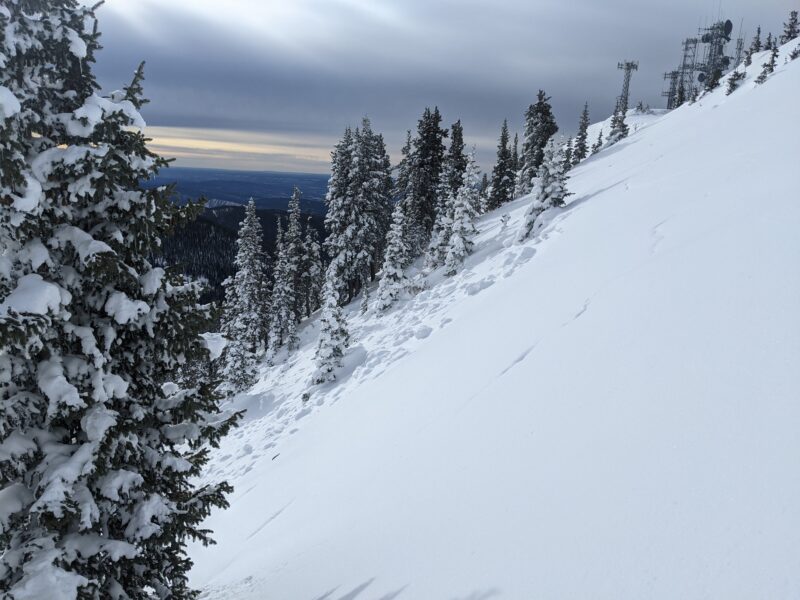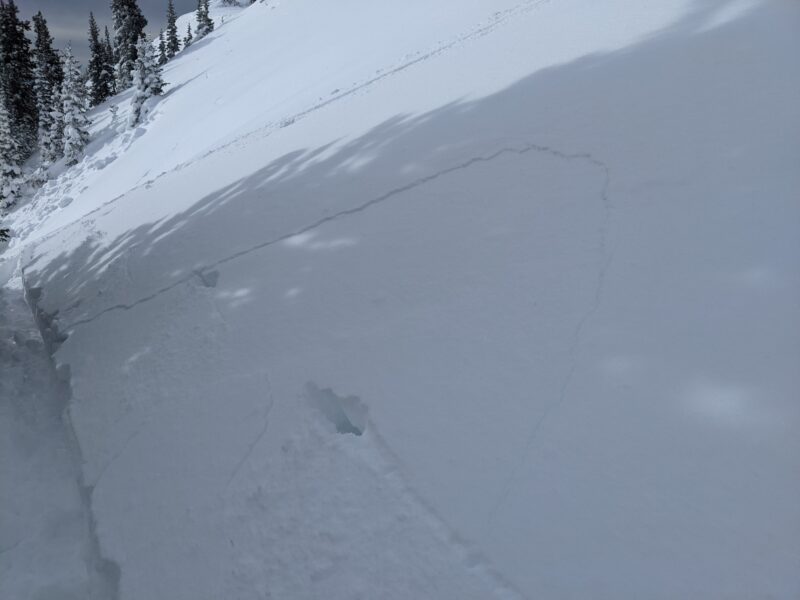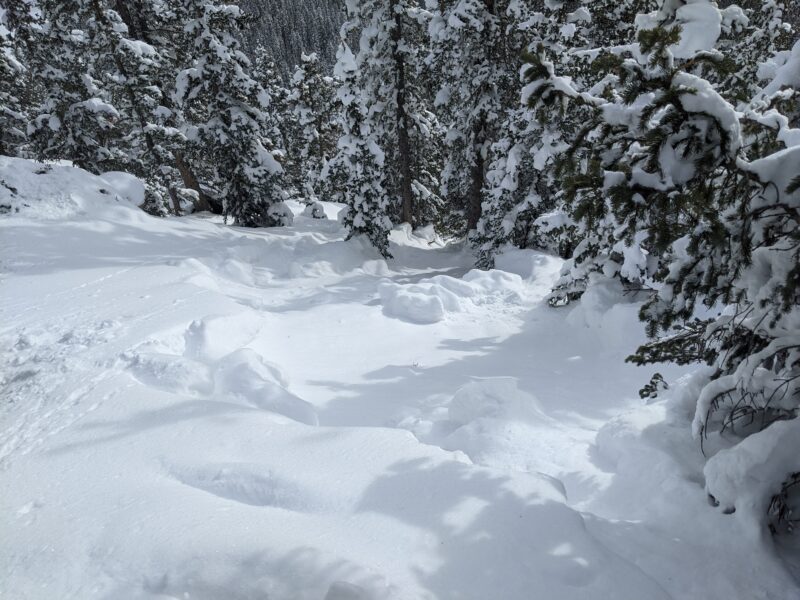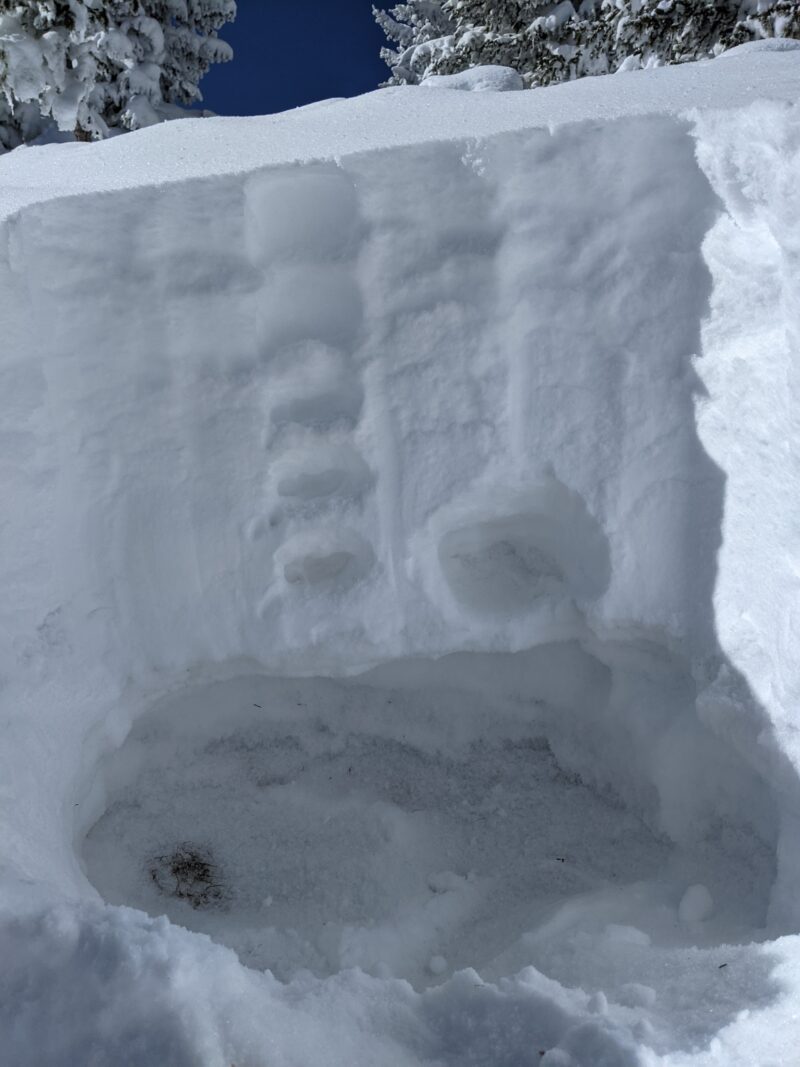Observation Details
Observation Date:
January 27, 2021Submitted:
January 31, 2021Zone or Region:
Santa Fe AreaActivity:
Skiing/SnowboardingLocation:
Tesuque PeakObserved Avalanches
Did you observe any avalanches?
YesAvalanche Type:
Soft SlabSize:
Size 2: Could bury, injure, or kill a personElevation:
12045Aspect:
EComments:
Follow up on obs. of remotely triggered avalanches from 1/26, after snowfall stopped and visibility improved. Both are located approx. 100 yards apart, near treeline on leeward and wind-loaded slopes. Both are small-to-large soft slabs that released at the interface of new and old snow layers, with an average slab depth of approx. 24 inches. Both were unintentionally, remotely-triggered by a skier. Both slides occurred in exposed terrain with the potential to pull a skier or rider into trees, or over cliffs and rocks below. The smaller of the two codes: SS-ASr-R1-D1-I ; the larger of the two codes: SS-ASr-R1-D1.5-ISigns of Unstable Snow
Did you see shooting cracks?
YesDid you experience collapsing or whumpfing?
NoObservations
A quick hand-pit was dug to reveal an overall strong-over-weak structure of the snowpack near treeline on an E-facing aspect. The pit was dug adjacent to recent avalanches.
Media




